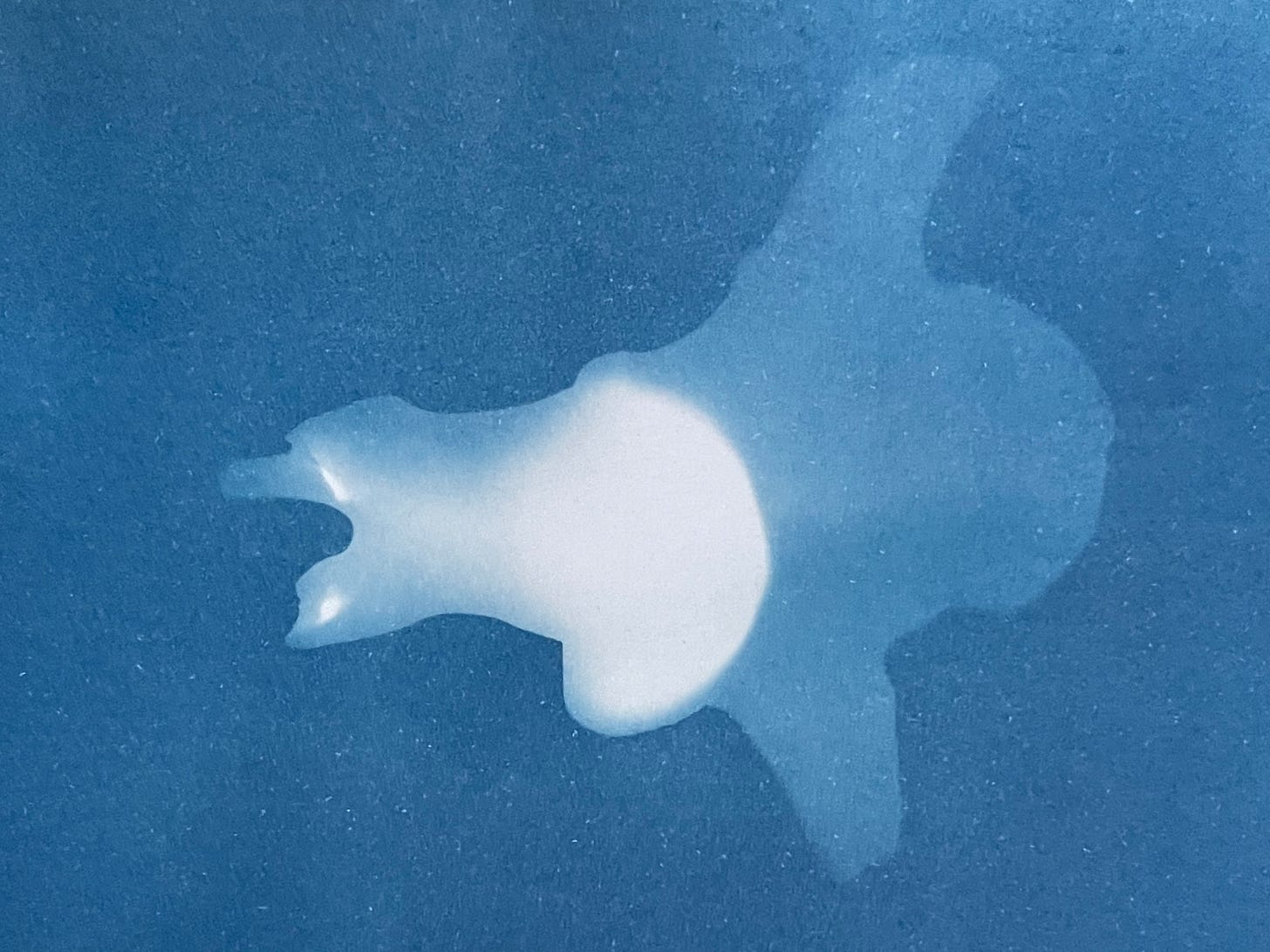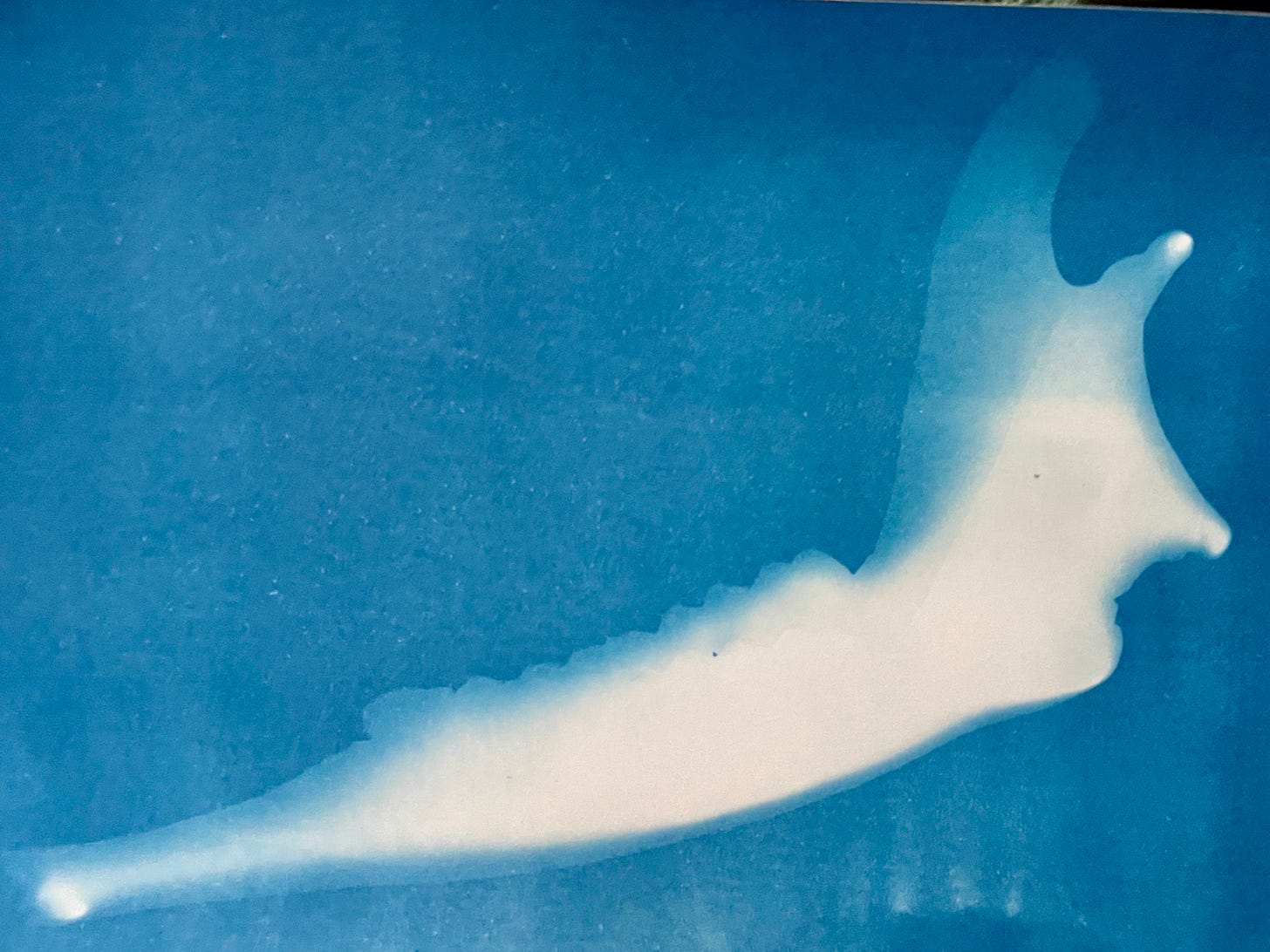On the X-Ray, the joints of my left wrist and both hands show microscopic, permanent damage. I peer at the doctor’s computer screen, trying to decipher the language of the images, foreign even though they depict what’s transpiring beneath my own skin.
The Damage has arrived right on schedule, a little less than ten years into my life with rheumatoid arthritis. That dreaded Damage I heard about immediately after my diagnosis. I was told it could be avoided for a while if I was able to reach remission through treatment, but would likely be a fact of my life eventually.
Permanent Damage when permanence was more of a distant idea than a reality. I was 24 years old.
This summer, rumor spread that a moose mysteriously wandered off the edge of the canyon at Kadunce River and died. A great reminder never to drink from rivers … you never know what is upstream, noted the woman who posted a picture of it to Facebook.
Curious, Hannah and I hike up the trail, then enter the canyon, where we pick our way along the rocks and slip our way upriver. The sun is aligned with the high walls so we’re bathed in light. We’re nearly to the second waterfall when we smell it. Death.
The bones are brown and black. The skeleton has been scattered by the water and scavengers both animal and human. Bits of flesh still remain, drawing in flies and emitting the smell of rot. There are ribs, huge vertebrae, a pelvis. Across the river, Hannah notices a feathered mass laid out on the rocks. I wade over to it. A vulture, drawn to death then somehow snared into it, laid to rest alongside the thing it intended to consume.
We marvel for a while, wonder why so many living things died strangely in this place, impossibly peaceful with the flowing water and bright sun. I scavenge a few of the bones, full of ideas of how I’d like to use them: hang weavings from the ribs, use the vertebrae in cyanotypes. As we walk away with my little bag of death, I feel like I’ve committed a violation. Like these bones, not yet cleaned and bleached by the elements into something less alive, are still too close to the animal they used to be.
In Women Who Run with the Wolves, gathering bones in the desert and singing them back together is metaphor for seeking out and healing the broken parts of us. It is a metaphor of resurrecting the truest, wildest self.
Maybe that is why peering through the portal of a moose pelvis or feeling the sharpness of a coyote tooth can carry so much meaning. An animal bone can say No more. An animal bone can say This way. An animal bone can say Not yet.
The first bone I found that felt like it had a message was a deer jawbone. I was walking on the Lake Superior beach at Kadunce River, trying to work through confusion about the man I was dating. I was being so heartily gaslighted that anxiety singed every inhale, making me unable to breathe too deep.
I went to that beach looking for answers, and the Lake coughed up the jawbone in my path. I stared at it, picked it up, ran my cold fingers over the smooth calcium. Something living had died. I felt like I was dying, a little, every day. I let the jawbone be a sign, an arrow pointing in a new direction, a firmness upon which to set my soul on and say, finally, Enough.
In May 2020, I found a pile of bones in wet loam, surrounded by fallen pine needles frozen into stubborn ice. I was in a strict two-week quarantine after returning from the Twin Cities—where COVID was rampant—to Grand Marais, where there had yet to be a single case. To avoid being the person to bring the pandemic to our small town, I took my quarantine seriously.
The cabin I moved into was comically ramshackle, built of rough logs and plywood. It was tiny—around 250 square feet, plus the loft upstairs where I slept on a mattress on the splintered floor. There was no running water, spotty cell service, and an outhouse where I went into a 5 gallon bucket that I dumped into a compost pile when it got full of my own waste. I was extremely aware of my own body: its grotesque functions, its inherent danger to others.
I was on my third day of quarantine when I found the bones. I was already struggling to get through the days. I thought maybe I’d like this isolated period—time to make my little tapestries and get re-acquainted with my northern self after being away for the first few months of the pandemic.
But instead I felt wrecked.
The strangeness of the cabin, the inability to numb out and scroll on my phone due to no connectivity, the fear that the pain in my left lung was COVID. My hours and days stretched on. I realized that aloneness is most pleasurable when you still have some sort of context bestowed upon you by outside forces. When someone knows that you’re alone, and cares. I had many someones, but they were so far away in that moment that the context they could provide didn’t feel like enough.
The bones, likely from a small deer, offered context. I knelt by them for a little bit, the ice biting my knees through my jeans. Maybe I prayed, but I can’t remember what for. Something living had died. Many of the living were dying.
As humans, if we’re lucky, we are embalmed and buried and burned before our bones reveal themselves to the air. If we’re lucky, no one will need to study our skeletons, no one will ever know the true extent of our Damage.
Permanent damage with rheumatoid arthritis can be invisible for a long time, until it isn’t. Sometimes I make my hands into fists to see if my fingers still bend all the way, which way they fold over each other. I watch them for their inevitable migration into twisted claws, but I don’t see anything yet.
Remission is elusive, and I’m not even sure I’d know it if I saw it. There are days when I wake up and don’t think about pain at all, until I try to do a push up in my workout class and my wrists won’t bend, or my foot crunches in a certain pair of shoes. Is this remission?
Occasionally by some alchemy of pharmaceuticals and barometric pressure and other mysterious forces, my swollen knuckles deflate. I catch a glimpse of how they used to look, how they may have looked if the disease had never found me. They look like my mom’s hands, which I’ve always loved.
But the next day the swelling returns, the Damage continues, and once again, they look like my own.
Go gather bones. —Clarissa Pinkola Estes







This writing is just spectacular. Having been there with you to experience it in real time and then read this creative writing is such a special treat. I will hold on to it.